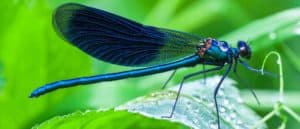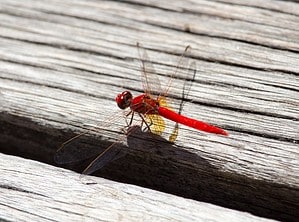Dragonflies are incredible, unique insects that have a fascinating way of zipping around the sky. But, how do dragonflies come into their adult form? What are the intricate parts of their cycle of life? In this article, we’ll be covering dragonfly reproduction in all of its forms. Starting with their conception, we’ll touch all of the bases regarding how a dragonfly’s life progresses. Whether you’re a big fan of this bug, or curiosity has simply gotten the best of you, this article will have all the information you need to become a bonified dragonfly reproductive expert.
The Dragonfly Life Cycle: An Overview
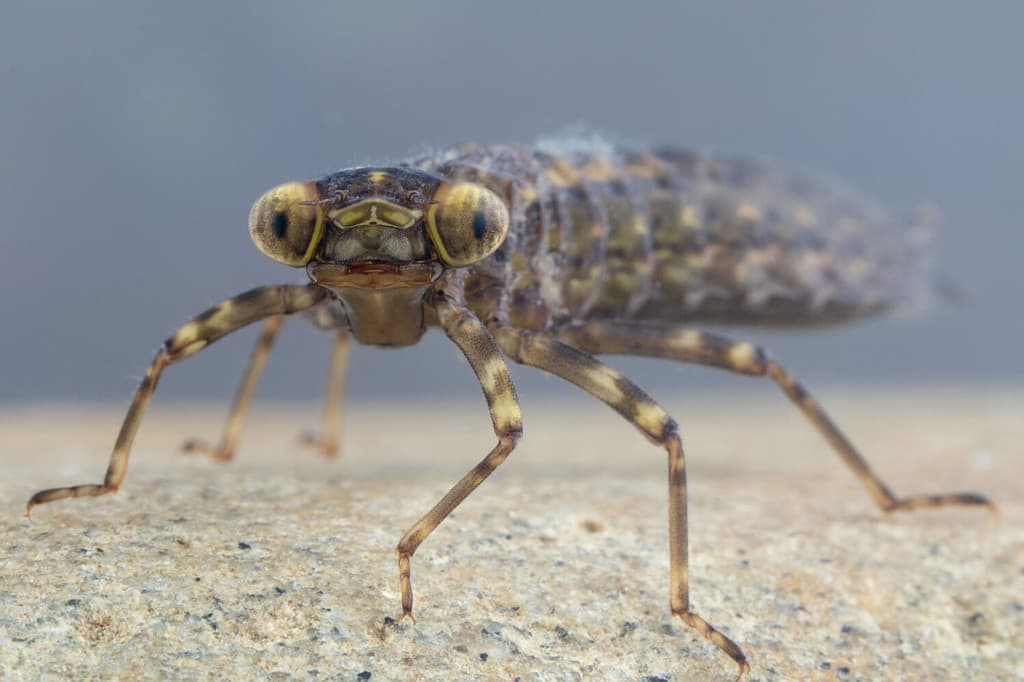
Dragonflies have a long larvae (or nymph) stage, sometimes lasting for years!
©asturfauna/Shutterstock.com
Before getting into the intimate details of how a dragonfly procreates, we should first get the bare basics down. As insects, dragonflies follow a life pattern that is fairly universal. This pattern has three phases: egg, larvae, and adult.
- Egg: The eggs of a dragonfly are oval-shaped and opaque in color, but you probably wouldn’t even notice considering how microscopically small they are! After mating, females lay their eggs in or near freshwater, which is why access to this water is so essential to the species.
- Larvae (Nymph): The dragonfly enters its larvae stage directly after it has been hatched. This stage is also referred to as the “nymph” stage, and during this stage, they go through several cycles of molting and shedding. After several months (sometimes years), the dragonfly will go through a “final molt,” and emerge from the water as an adult.
- Adult: Flying, hunting, and looking for love, the life of an adult dragonfly is exciting. Unfortunately, it is also short. This is why reproduction, as we’ll discover more intimately as we move forward, is so essential to the survival of their species.
How Dragonflies Find Partners
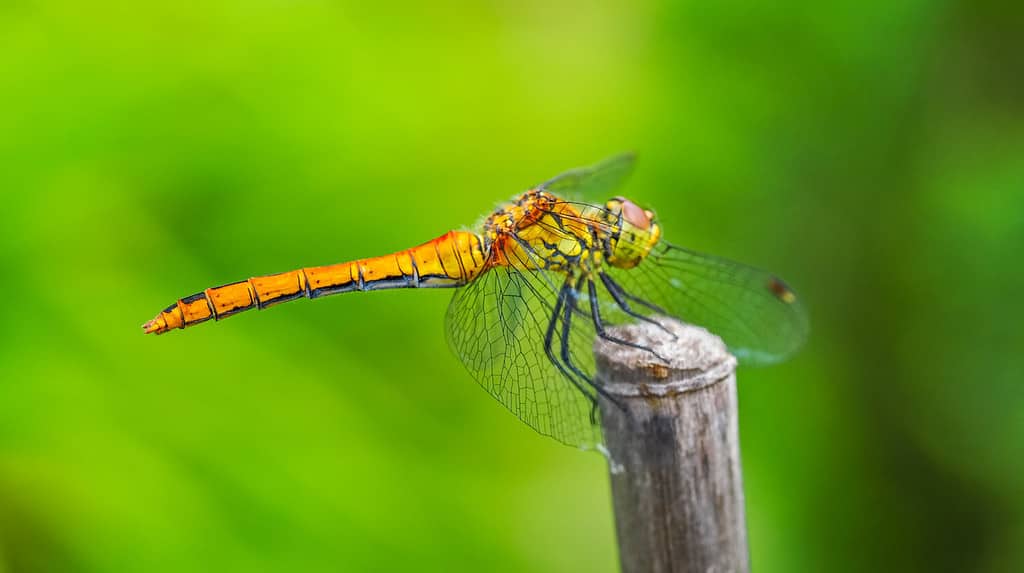
Dragonflies have great eyesight- and they use this to their advantage when locating a reproductive partner.
©LifeCollectionPhotography/Shutterstock.com
The first step in the dragonfly reproduction process is, believe it or not, locating a mate. Although there are many species of insects and other creatures that have specific courtship behaviors, dragonflies keep things quite simple. With their incredible vision, a male dragonfly locates a female mate by observing her. He studies her movement, color, and flight style to be certain that she’s the one. This can be harder than it looks, especially if they’re searching in an environment that is heavily saturated with other dragonflies. But, once their special someone has been located, the mating process can begin.
The Dragonfly Mating Wheel
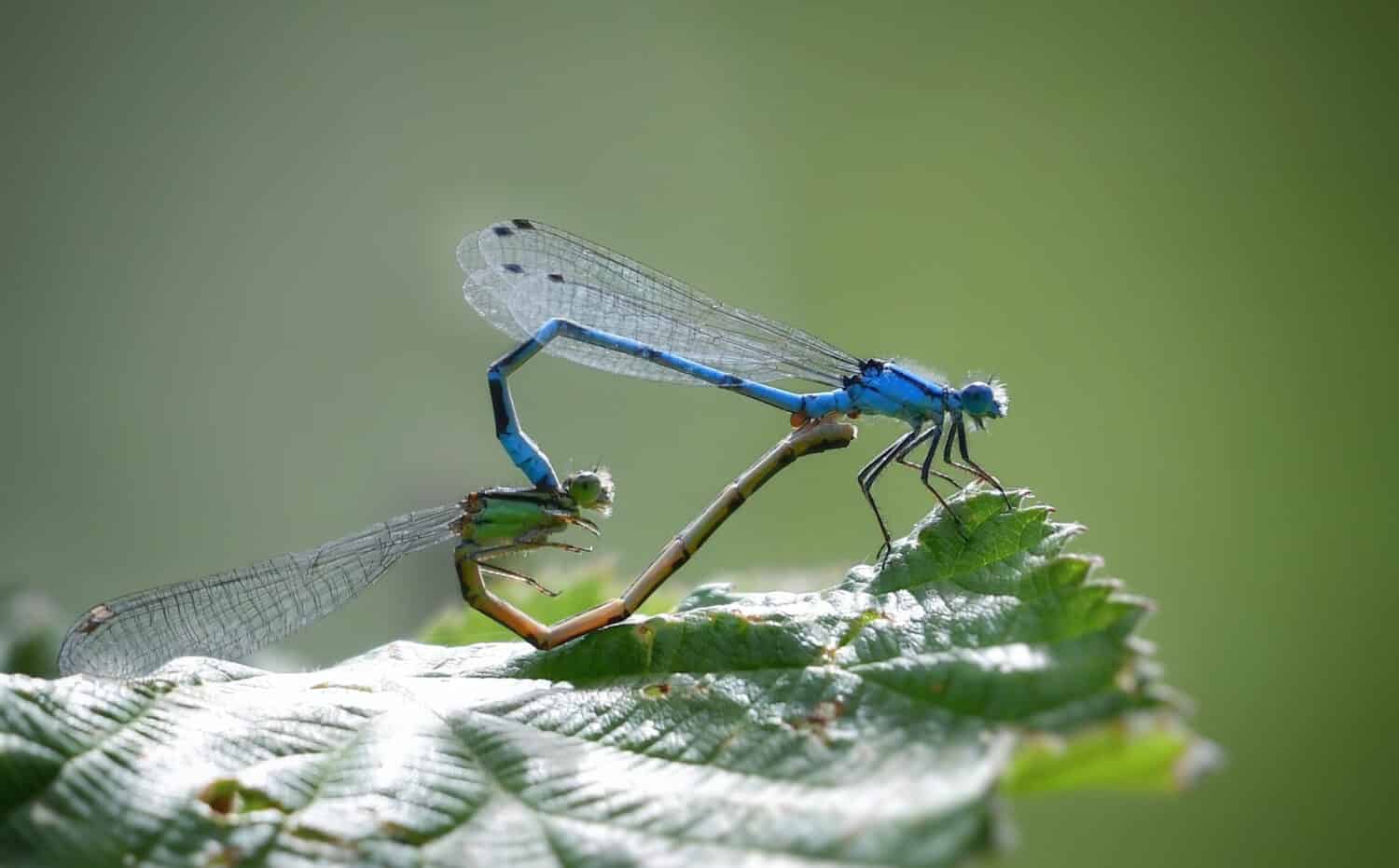
The mating wheel is an interesting and unique process, one exclusive to dragonflies.
©Vladimir Turkenich/Shutterstock.com
Once the male dragonfly has secured a suitable female, it’s time to get busy. Dragonflies have an incredibly unique formation while copulating, one that takes the symbol of a heart, or circle. This stance is usually referred to as a “mating wheel,” and here is how it works:
The male first grasps the female by the back of her head using body parts called claspers. These are located at the end of his abdomen. These are designed to grip onto specific parts of the female, ensuring a connection that is strong and not easily interrupted. the female bends her abdomen forward to connect her genitalia with the male’s secondary genitalia, which is located closer to the base of his abdomen (the thorax area).
Obviously, the goal of the mating wheel is to successfully inseminate the female. How long this step in dragonfly reproduction lasts exactly is dependent on how long the objective takes to complete. Sometimes everything can be completed in a few minutes. Other times, it can take several hours before the wheel is broken!
Post-Mating Dragonfly Behavior
So, what happens once the deed is done? This actually depends on the kind of dragonfly we’re discussing. In some species, the male will immediately depart from the female post-mating. In others, though, the male will temporarily stay nearby in order to guard the female from both predators and other males seeking a partner.
Another behavior observed in some species, though, is the male staying with the female throughout the entire egg-laying process. In these situations, the two will engage in something referred to as “pair flying,” where they fly together to the site where the female will lay her eggs. While she is doing so, the male will stick around nearby to try and keep the area safe and secure.
The Dragonfly Egg-Laying Process
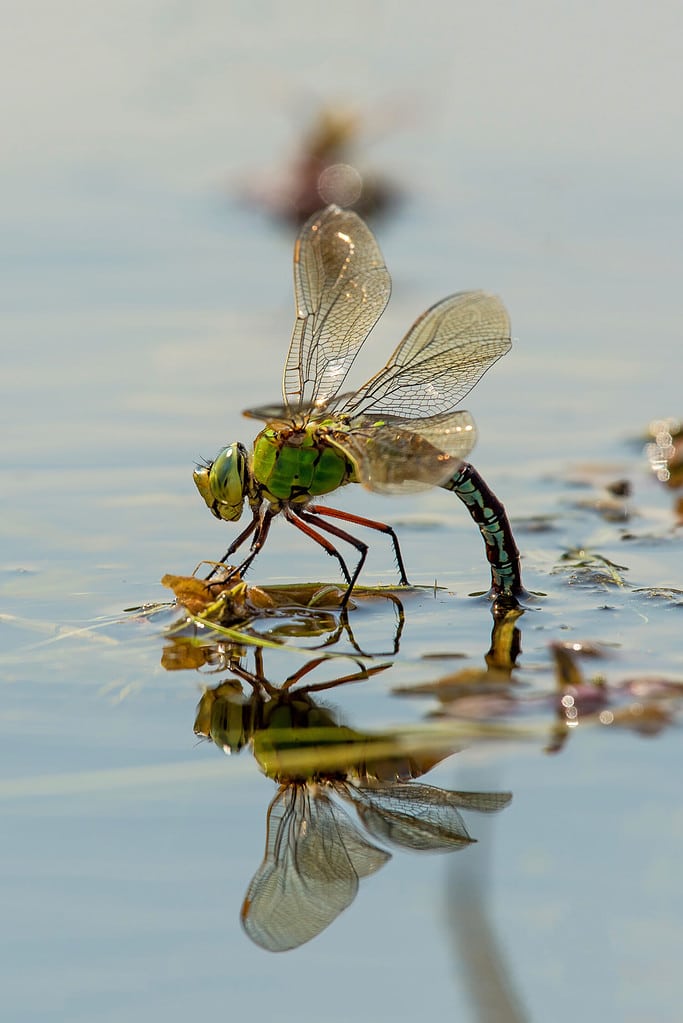
Some dragonflies lay their eggs from the sky, but others lay them directly into the water.
©Hans Viveen/Shutterstock.com
The last stage in dragonfly reproduction is, of course, the egg-laying and hatching process. Before choosing the area to lay their eggs in, there are a few things that the female dragonfly will take into consideration. These include water quality, a solid presence of prey, and a decent amount of vegetation.
Some dragonflies possess an ovipositor, a structure that allows them to insert their eggs into plant tissues. This helps to protect the eggs from any potential predators. Other species of dragonfly will just drop the eggs from the sky, or submerge themselves directly into the water for a more direct egg placement.
In their lifetime, a female dragonfly can lay anywhere between one hundred and one thousand eggs. The reason for this volume is that these eggs are delicate, and having as many offspring as possible gives them the best chance at survival. Once these eggs hatch, which takes anywhere between five and fourteen days, they’ll be ready to begin their full, exciting dragonfly lives!
The photo featured at the top of this post is © Gerald A. DeBoer/Shutterstock.com
Thank you for reading! Have some feedback for us? Contact the AZ Animals editorial team.




